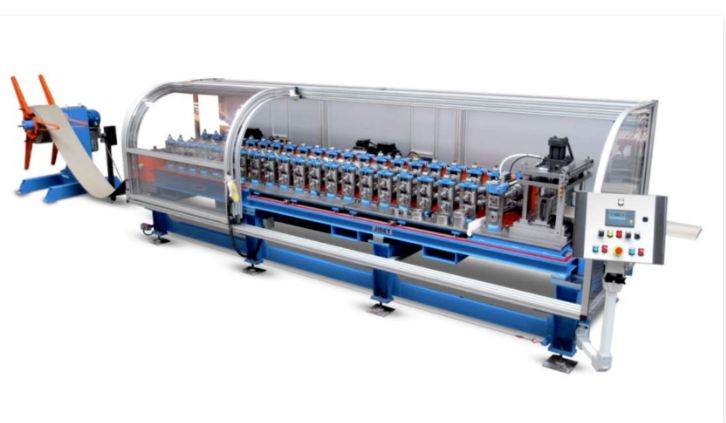Controlling the speed of a roll forming machine is crucial for optimizing production efficiency and maintaining the quality of the finished products. 1
Variable Frequency Drives (VFDs)
- Functionality: VFDs allow for the adjustment of motor speed by varying the frequency and voltage supplied to the motor.
- Benefits: This enables precise control over the speed of the roll forming machine, allowing operators to increase or decrease speed based on the specific requirements of the material being processed.
2. Servo Motors
- Functionality: Incorporating servo motors provides high precision in speed control.
- Benefits: Servo motors can adjust speed in real-time, allowing for changes based on production needs or material specifications, ensuring consistent quality and reducing material waste.
3. PLC (Programmable Logic Controller) Integration
- Functionality: PLCs can automate speed control based on input from sensors and user settings.
- Benefits: They can monitor production parameters and adjust the speed of the machine automatically, enhancing overall efficiency and reducing the need for manual adjustments.
4. Control Panels and User Interfaces
- Functionality: Modern roll forming machines often come with user-friendly control panels that allow operators to set desired speeds easily.
- Benefits: Operators can quickly adjust speeds to accommodate different profiles or materials without extensive downtime.
5. Material Characteristics
- Considerations: The speed may need to be adjusted based on the thickness, width, and type of material being processed. Thicker materials may require slower speeds to ensure proper forming without defects.
- Benefits: Tailoring speed to the material type helps maintain product quality and reduces the likelihood of machine strain.
6. Production Requirements
- Considerations: Production demands, such as order deadlines or batch sizes, can influence speed settings.
- Benefits: Adjusting speed in response to production needs allows manufacturers to meet tight deadlines while ensuring quality output.
7. Feedback Mechanisms
- Functionality: Using sensors and feedback loops can help in adjusting the speed dynamically during operation.
- Benefits: This real-time adjustment helps maintain consistent product dimensions and minimizes defects, enhancing the efficiency of the manufacturing process.
Conclusion
In summary, controlling the speed of a roll forming machine involves a combination of advanced technology, operator input, and consideration of material characteristics. By integrating automation solutions like VFDs and PLCs, manufacturers can significantly enhance their production capabilities, allowing for greater flexibility and efficiency in meeting market demands.



